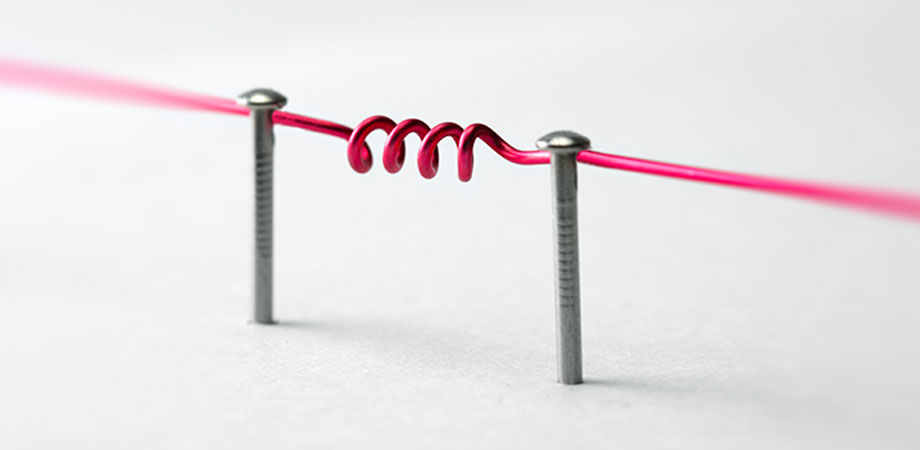Well-Bred Antennas Are Hot

Thermoelectric power generation is a cool idea that is intrinsically difficult. It seems like such a good idea: create a device that absorbs waste heat and turns it into electricity. The basic idea makes use of the Seebeck effect, where a temperature gradient results in a voltage. The voltage drives a current, which powers a device.
In practice, a thermoelectric device consists of a junction between two materials, and the two materials are electrically connected via the device, like a space probe or remote communications equipment, that you wish to power. The temperature difference between the hot side and the cold side provides the voltage, while the electrical conductivity of the materials provides the current. That means that the device design must achieve several requirements that run up against some fundamental limitations pretty quickly.
To give you a taste of the difficulties, a thermoelectric device should conduct electrons with low loss. The thermal conductivity should be poor so that a large temperature difference is maintained. Unfortunately, electrons also carry thermal energy. The electrons carry heat energy to the cold side of the device, reducing the thermal gradient. As a result, the output power is small, and the efficiency is low.
In metals, the ratio of thermal conductivity and electrical conductivity is usually fixed, leaving little freedom for optimization. So, how can thermoelectric power generation be improved? The answer may be in the optical design. The metals must harvest thermal energy, in the form of infrared radiation, from the environment. This is where good antenna design comes in: if thermal energy can be concentrated at a single point on a wire, the resulting temperature gradient will be higher.
Breeding antennas
It is not obvious what an optimum antenna is, which makes it difficult to design. The alternative is to start with a design that you believe is okay-ish, then set a computer loose on it to optimize the design. This is exactly what Mendez-Lozoya and colleagues have done in a recently published paper in the Journal of Nanophotonics.
The antenna design that the researchers started with was a dipole antenna: two small metal arms separated by a small gap. To turn this into a thermoelectric device, the two metals must be different: nickel and platinum in this case. And, the two metals must be connected to form a junction.
To optimize the shape, Mendez-Lozoya and colleagues used an algorithm-inspired by the processes that govern evolution-based on Bézier curves. A Bézier curve is an extremely flexible way to define a shape, where each curve is defined by a very limited number of points.
The positions of each point in the curve serve as genes, which are swapped and (occasionally) mutated during the breeding phase. To decide which antennas should breed most successfully, the researchers calculated the amount of electromagnetic radiation loss of the antenna. The fitness of an antenna is increased if the antenna has fewer radiative losses. Or to put it more directly, the algorithm searches for antenna designs that result in the maximum amount of antenna heating.
The end result is actually pretty similar to the starting dipole antenna, but tilted, with the junction becoming a point rather than a line.
A hot antenna
To test if the design was truly improved, the researchers fabricated both dipole and optimized antennas. They showed that under standard illumination conditions, the open circuit voltage was three times higher for the optimized design, while the output power increased by about 30 percent.
Further investigation showed that this increase in performance was due to the bandwidth of the antenna. Both the dipole and the optimized antenna are resonant for infrared radiation common around room temperature. However, the optimized antenna is more efficient over a broader range of frequencies, absorbing 20-30% more energy in the thermal energy range.
The researchers also used a model to study the thermal behavior of the antennas. Their model shows that the increased absorption results in antennas that are about 15 degrees Celsius hotter compared to the dipole configuration. The cold side of the device, however, remains at room temperature, so a larger thermal gradient (about 25 degrees Celsius) is, indeed, achieved.
The research team hopes to transfer the efficiency improvement to materials and devices that allow for more efficient thermoelectric power generation.
Read the original article in the Journal of Nanophotonics: doi.org/10.1117/1.JNP.13.026005
Chris Lee is a physicist and writer living and working in Eindoven, the Netherlands.
| Enjoy this article? Get similar news in your inbox |
|



